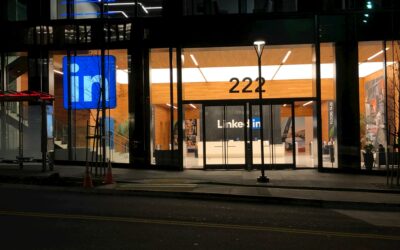Engaging with your audience is paramount to building lasting relationships and driving conversions for your business This is where the engage phase of the inbound methodology comes into play. By nurturing leads with personalised content, providing valuable insights, and fostering meaningful interactions, you can deepen connections and guide prospects through the buyer’s journey.
Understanding the Inbound Methodology
Before diving into the engage phase, let’s first understand the broader concept of the inbound methodology. Inbound marketing is a customer-centric approach focused on attracting, engaging, and delighting customers at every stage of their journey. Unlike traditional outbound marketing tactics that interrupt audiences with irrelevant messages, inbound marketing aims to provide value and build trust by delivering helpful, personalised content that addresses specific needs and interests.
Differences between outbound and inbound marketing
Approach
Outbound marketing: Also known as traditional marketing, outbound marketing relies on pushing messages out to a wide audience through various channels such as television ads, radio commercials, print advertisements, cold calling, and direct mail. It involves interrupting audiences with promotional messages, often without their consent.
Inbound marketing:Inbound marketing focuses on attracting potential customers by providing valuable content and experiences that align with their interests and needs. Instead of interrupting audiences, inbound marketing aims to pull prospects in through channels like content marketing, search engine optimisation (SEO), social media marketing, and email marketing.
Targeting
Outbound marketing: Typically targets a broad audience based on demographic characteristics such as age, gender, location, and income level. The messaging is often generic and not tailored to individual preferences.
Inbound marketing: Takes a more targeted approach, focusing on attracting and engaging specific segments of the audience based on their interests, behaviours, and preferences. By creating personalised content and experiences, inbound marketers aim to resonate with their target audience on a deeper level.
Communication
Outbound marketing: Communication is largely one-way, with brands broadcasting their messages to the masses. There is minimal interaction or engagement with the audience, and the focus is on delivering a persuasive sales pitch.
Inbound marketing: Communication is two-way and interactive. Brands engage in conversations with their audience, listen to their feedback, answer their questions, and provide valuable insights and resources. The goal is to build relationships and foster trust over time.
Cost
Outbound marketing: Outbound marketing campaigns can be expensive, especially when using traditional advertising channels such as television, radio, and print media. The cost-per-impression (CPM) or cost-per-click (CPC) can be high, and there is no guarantee of reaching the target audience.
Inbound marketing: Inbound marketing campaigns tend to be more cost-effective, as they rely on digital channels that often have lower entry costs.
Inbound Marketing costs $14 less than traditional marketing for each newly acquired customer.
Content creation, SEO optimisation, and social media engagement can be done at a fraction of the cost of traditional advertising, making inbound marketing accessible to businesses of all sizes.
Results
Outbound marketing: Campaigns can yield immediate results in terms of brand visibility and awareness. However, the effectiveness of outbound tactics may diminish over time, as consumers become increasingly adept at tuning out interruptive messages.
Inbound marketing: Focuses on building long-term relationships with customers and generating sustainable results. While inbound strategies may take longer to produce tangible outcomes, such as leads and conversions, they often result in higher-quality leads, increased customer loyalty, and greater return on investment (ROI) in the long run.
Stages of inbound marketing
Okay, so now that you’re convinced inbound marketing is the way to go, let’s look at the stages that this model follows.
- Attract
In the attract stage, the goal is to draw potential customers to your brand by creating valuable and relevant content that addresses their needs, interests, and pain points. This involves leveraging various channels such as blogging, social media, search engine optimisation (SEO), and content marketing to increase brand visibility and attract qualified traffic to your website.
- Engage
Once you’ve attracted visitors to your site, the next step is to engage them with compelling content and interactive experiences. This stage focuses on building relationships with prospects by providing them with valuable information, resources, and opportunities to interact with your brand. This can include tactics such as email marketing, social media engagement, live chat, webinars, and personalised messaging to nurture leads and keep them engaged throughout their buyer’s journey.
- Delight
The delight stage is all about exceeding customer expectations and delivering exceptional experiences that delight and surprise your audience. By providing ongoing support, valuable resources, and personalised interactions, you can turn customers into brand advocates who are eager to share their positive experiences with others. This stage is crucial for building long-term relationships and fostering loyalty, leading to repeat business and referrals.
- Convert
Finally, in the convert stage, the goal is to turn engaged prospects into paying customers. This involves guiding leads through the sales funnel and providing them with the information, incentives, and support they need to make a purchase decision. Tactics such as lead nurturing, targeted offers, sales enablement, and conversion rate optimisation (CRO) are used to encourage prospects to take the desired action and become customers.
Why the Engage Phase is Important
The engage phase plays a crucial role in nurturing leads and guiding them towards conversion. By actively engaging with prospects through targeted communications, personalised interactions, and valuable insights, businesses can build trust, establish credibility, and ultimately drive conversions. In this phase, effective engagement helps to foster loyalty, turning customers into brand advocates who are more likely to promote your products or services to others.
Putting the Engage Phase into Action:
Now that we have a basic understanding of the engage phase and its importance, let’s explore some actionable strategies to effectively engage with your audience:
- Personalise Your Communications
Tailor your messaging and content to meet the specific needs and interests of individual leads and prospects. Personalisation can involve addressing recipients by name in emails, segmenting your audience based on demographics or behaviour, and delivering targeted content that resonates with their preferences and pain points.
Example: Let’s say you run an e-commerce business selling fitness apparel and accessories. You have a customer named Sarah who frequently purchases yoga pants and athletic tops from your website. Based on Sarah’s purchase history and browsing behaviour, you have valuable insights into her preferences and interests.
Instead of sending Sarah generic promotional emails about your entire product catalogue, you decide to personalise your communication to better meet her specific needs and preferences. You craft an email with the subject line: “Sarah, Get Ready to Elevate Your Yoga Practice with Our Latest Arrivals!”
In the email, you highlight your newest collection of yoga pants and tops, featuring innovative designs, breathable fabrics, and flattering fits. You include images of the products in various colours and styles, knowing that Sarah prefers vibrant colours and patterns.
You also incorporate personalised recommendations based on Sarah’s past purchases, suggesting complementary items such as a matching yoga mat, water bottle, or workout headband. By leveraging data from Sarah’s previous interactions with your brand, you can make tailored recommendations that align with her interests and lifestyle.
You can also include a special offer or discount code exclusively for Sarah, thanking her for being a loyal customer and rewarding her for her continued patronage. This personalised incentive makes Sarah feel valued and appreciated, increasing her likelihood of making a purchase. By making your communications more relevant and personalised, you can increase engagement and build stronger connections with your audience.
- Provide Valuable Insights
Share industry trends, best practices, and thought leadership content to position your brand as a trusted advisor and resource. Offer valuable insights, actionable tips, and in-depth analysis that demonstrate your expertise and help your audience solve their challenges. In this case, now your customer Sarah relies on us not only for stylish activewear but also for valuable insights and expertise in the fitness industry. You can share industry trends, best practices, and thought leadership content to position ourselves as a trusted advisor and resource for Sarah and others like her. By offering actionable tips and in-depth analysis, you help Sarah solve her fitness challenges and achieve her wellness goals, fostering trust and loyalty in the process. By providing valuable content that educates and informs, you can establish credibility, foster trust, and keep your audience engaged with your brand.
- Foster Two-Way Communication
Encourage feedback, questions, and discussions to create meaningful interactions and build rapport with your audience. By actively encouraging feedback, questions, and discussions from Sarah and your other customers you can create meaningful interactions and build rapport. Sarah’s input is invaluable so it’s important that you respond promptly and thoughtfully to her inquiries and comments. By engaging in conversations, participating in online communities, and listening to Sarah’s needs, you can strengthen your relationship with her and demonstrate our commitment to her satisfaction.
- Leverage Multiple Channels
Utilise email marketing, social media, live chat, webinars, and other channels to reach your audience where they are most active. Reach out to Sarah through various channels, including email marketing, social media, live chat, and webinars, to ensure that you connect with her where she’s most active. By diversifying your engagement efforts and experimenting with different formats, you increase your chances of engaging with Sarah effectively. Whether she prefers browsing the latest collections on Instagram or attending a live Q&A session on Facebook, you should be there to meet her wherever she is online.
- Measure and Iterate
Continuously monitor engagement metrics, gather feedback, and adjust your strategies based on data-driven insights to optimise results over time. By tracking key performance indicators such as open rates, click-through rates, and social media engagement, you’ll gain valuable insights into Sarah’s behaviour and preferences. You can use this data to refine strategies, experiment with new approaches, and optimise your tactics to better resonate with Sarah and other customers to drive better results for your business.
The engage phase of the inbound methodology is a critical component of any successful marketing strategy. By actively engaging with leads and prospects through personalized communications, valuable insights, and meaningful interactions, businesses can build trust, establish credibility, and drive conversions. By understanding the importance of engagement and implementing effective strategies, you can nurture relationships with your audience and guide them towards becoming loyal customers and brand advocates.





